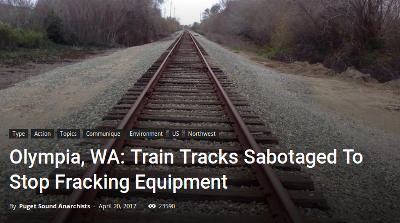
Review by Parag Dalal / Deep Green Resistance
Spoiler alert: important pieces of the movie plot revealed below.
Rang De Basanti opens with a British officer in pre-independence India walking along prison cells and finally entering one. The man inside, reading a book, instructs “Wait a moment, Mr. McKinley, one revolutionary is meeting another.” Thus are we introduced to the legendary Bhagat Singh, engrossed in a book by Lenin. Singh rises calmly, ready to be escorted to the gallows. Mr McKinley, with sadness on his face, says “Sorry it has to end like this.” Bhagat Singh replies unwaveringly with a smile on his face “But this is not the end, Mr McKinley. There will be many more who will follow.” He starts walking and we see tears in the eyes of Mr McKinley.
Rang De Basanti goes against the regular Bollywood (Hindi) fare of romantic movies. It is a powerful commentary on the state of Indian politics and a call for direct action. Its ultimate clearance by the Indian Censor Board, albeit with a lot of controversy, delays, and reviews, is nothing short of surprising. The music by the Oscar winning A.R Rahman is visceral and evokes feelings of anger, rage and of freedom fighters and Indian independence.
In an interview with Rakeysh Omprakash Mehra, the writer, director and co-producer of the film said that when Aamir Khan heard the script, he immediately agreed to star in it. This is a telling fact since Aamir Khan, one of the biggest names in Bollywood, has since directed and starred in some of the most controversial Bollywood movies, bringing some very deep seated and taboo topics of Indian society to light. Amongst his films are a satirical comedy about the farmer suicides in India (Peepli Live); a story about Mangal Pandey, an Indian soldier who led a violent revolt against the British Rule in India in 1857 (Mangal Pandey: The Rising); and a story of a dyslexic eight-year old child which brought awareness to dyslexia in India (Taare Zameen Par).
Rang De Basanti is a story of four regular college going young men who are completely apathetic to Indian politics until they find themselves at the receiving end of the corrupt system. Before the main events in the movie, they are cast in a documentary about five Indian freedom fighters – Chandrasekhar Azad, Bhagat Singh, Shivaram Rajguru, Ashfaqulla Khan, and Ram Prasad Bismil. The choice of these specific freedom fighters is significant. While all of them were key in achieving Indian independence, all of them used all means necessary, including violence against the British empire. Four of them were hanged, and the fifth shot dead in a conflict with the British. While there is no way to ascertain the truth, story has it that as they were escorted to be hanged, these men wore gentle smiles, looked their executioners in the eyes, and were confident they did the right thing and were inspiring hundreds of Indians to do the same. History proves the last part was definitely true, not only during the independence struggle but also today.
In the movie, an ace air force pilot friend of the actors is killed during a practice run in a MIG-21 crash. The government closes the investigation concluding that it was the pilot’s fault, covering up the true cause: a politician bought cheap spare parts for the MIGs in return for a bribe. The young men and their community hold a rally and vigil, but the police violently disperse it, brutally injuring their friend’s mother. With peaceful protest not an option, and at their wit’s end as to what to do, they decide to kill the politician involved in the deal.
The parallels between the modern protagonists and the freedom fighters they portrayed are reinforced repeatedly with cuts to black and white clips of them playing their older versions. This vividly highlights similarities between the modern power structure and British rule. One of the most inspiring poems written during the Indian independence ― Sarfaroshi ki Tamanna by Bismil Azimabadi ― which to this day inspires countless Indians and brings up visceral feeling, is featured in the movie at key moments.
सरफ़रोशी की तमन्ना अब हमारे दिल में है
देखना है ज़ोर कितना बाज़ू-ए-क़ातिल में है
which loosely translates to:
The desire for revolution is in our hearts
Let us see what strength there is in the arms of our executioner
The youth carry out the assassination, but the elites spin the news to paint the corrupt politician as a martyr in the media. So the modern freedom fighters take over a radio station to reveal the entire truth and their reasons for killing the minister. The police declare them terrorists and kill all of them, the scenes moving back and forth between the deaths of the historic freedom fighters and those of the protagonists.
The movie had a noticeable impact on Indian society. Internet bloggers increased their criticisms of corruption and bureaucracy in the Indian Government and intense political discussions were common after the movie’s release. Young people took to streets protesting many contemporary issues and injustices, most notably the 1999 Jessica Lall Murder Case, in which the court acquitted the accused which caused intense civil protests for his re-arrest. One group of demonstrators carried out a candlelight vigil similar to that in the movie. In another instance, large rallies were organized in India and the US in response to the Priyadarshini Mattoo rape and murder case. A survey revealed Rang De Basanti as the cause of this sudden increase in Indian people’s political involvement.
The movie is revolutionary in its subject matter. The audience, especially youth, are not only sympathetic but even identify with the protagonists, average college going men. The sympathy does not wane even after they assassinate the corrupt politician and take over the radio station at gunpoint to deliver their message. The message is clear: violence is not only justified but required in certain situations. The politicians and the police force are depicted in a negative light, something almost never seen in any media, Indian or Western. The movie inspired a generation of Indian youth to take direct action and continues to inspire people to this day.
Rang De Basanti is available in the US for rental from Netflix, or purchase at amazon.com
 Our Underground Action Calendar lists attacks from as far back as the 1970s, to inspire and serve as a research tool. We include a variety of actions from around the world, some carried out by individuals, some by organized militant groups. Targets range from local earth-destroying construction equipment to networks of oil wells and pipelines. Browsing the list gives a good idea of what can be accomplished with simple acts of monkeywrenching or with persistent campaigns against industrial infrastructure.
Our Underground Action Calendar lists attacks from as far back as the 1970s, to inspire and serve as a research tool. We include a variety of actions from around the world, some carried out by individuals, some by organized militant groups. Targets range from local earth-destroying construction equipment to networks of oil wells and pipelines. Browsing the list gives a good idea of what can be accomplished with simple acts of monkeywrenching or with persistent campaigns against industrial infrastructure. 
